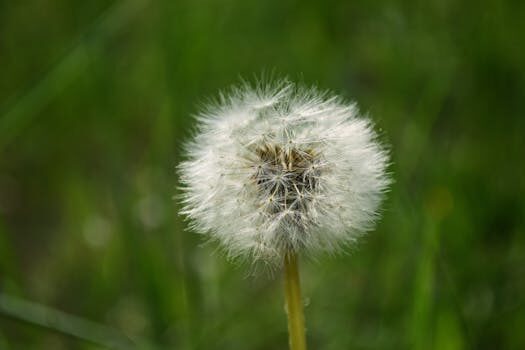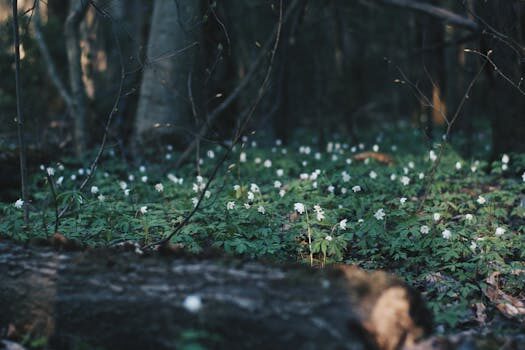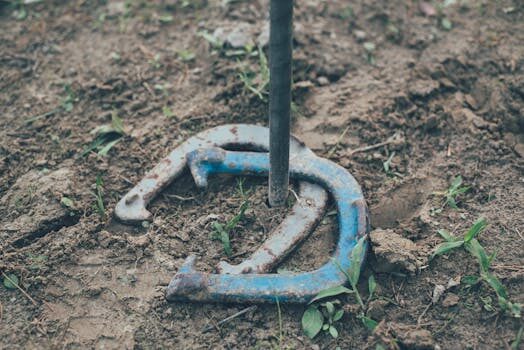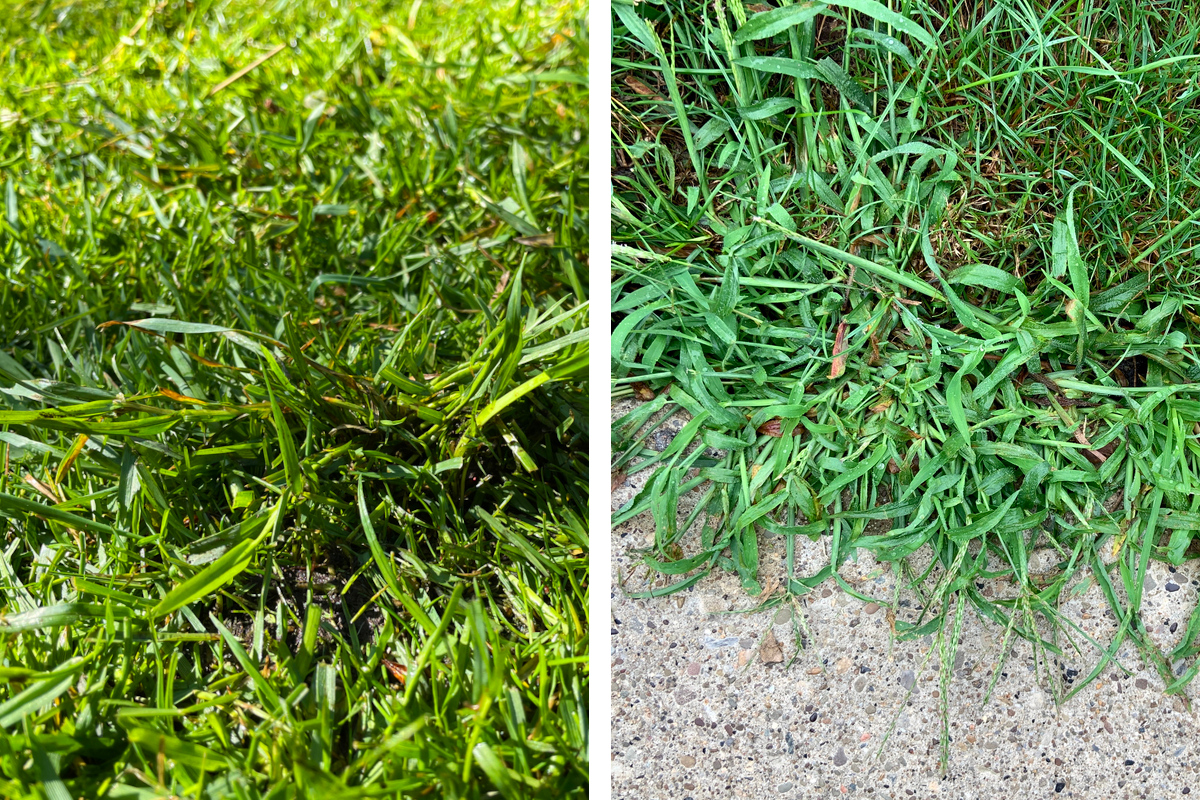Discovering unwelcome grasses in your lawn can be a frustrating experience. Two of the most common culprits are crabgrass and quackgrass, each bringing distinctive growth patterns and challenges. While they may seem similar at first glance, understanding their differences is crucial for effective lawn management.
Whether you’re a green thumb or a new homeowner, it’s important to know how to identify these invasive species and tackle them head-on. This article will guide you through the process, offering a simple tip to tell these lawn invaders apart.
How to Identify Crabgrass and Quackgrass?
Identifying crabgrass and quackgrass is the first step in controlling these invasive grasses. Crabgrass, known scientifically as Digitaria, is an annual grass that thrives in hot, dry conditions. It has a distinctive star-shaped pattern and grows in a low, sprawling manner.
Quackgrass, on the other hand, is a perennial with a more upright growth. Its leaves are broader with a short, membranous ligule, and it often appears in clumps. Quackgrass also has a unique feature called auricles, which wrap around the stem at the base of the leaf.
Knowing these visual distinctions is essential for proper weed management. Remember, crabgrass dies off in winter while quackgrass’s deep rhizomes make it a year-round concern.

What Are the Differences Between Crabgrass and Quackgrass?
When it comes to crabgrass vs quackgrass, their differences are more than skin deep. Crabgrass seeds need warm soil to germinate, typically in late spring or early summer, and it prefers open, disturbed areas to take root. Its life cycle ends with the first frost, making it an easier weed to control over time.
Quackgrass is a more tenacious opponent. It possesses an extensive root system called rhizomes that can spread far and wide under the soil. The presence of rhizomes means quackgrass can be more challenging to remove once established.
These differences greatly affect how you should approach lawn care and weed control strategies for each species.
How to Get Rid of Quackgrass Effectively?
Removing quackgrass requires a mix of mechanical and chemical methods. Manual removal is effective but labor-intensive, requiring gardeners to dig out the rhizomes completely. Unfortunately, any fragments left behind can regrow.
For chemical control, selective herbicides may be used, but they must be applied carefully to avoid damage to the surrounding grass. In some cases, non-selective herbicides may be necessary, followed by reseeding of the affected area.

Consistent lawn maintenance, including proper mowing and fertilization, also helps prevent quackgrass from gaining a foothold by promoting the growth of healthy turf.
What Other Invasive Grasses Should You Watch For?
In addition to crabgrass and quackgrass, there are other invasive grass species to be mindful of in your lawn. Johnson grass and tall fescue can also become problematic if not managed correctly. These species, along with the aforementioned grasses, can quickly overtake a lawn, turning your lush green into a weedy mess.
Each species requires a targeted approach for control and prevention, emphasizing the importance of accurate identification and understanding of their growth habits.
How to Control Crabgrass in Your Lawn?
Controlling crabgrass starts with pre-emergent herbicides, which are most effective when applied before the crabgrass seeds germinate. Timing is everything; apply too early, and the treatment won’t last through the season, too late, and the seeds will have already sprouted.
Proper lawn care practices such as maintaining a thick turf, mowing at the right height, and adequate watering can also prevent crabgrass from becoming a problem. Remember, a healthy lawn is your best defense against this annual invader.
 How to get rid of flea beetles: top tips for deterring these pests
How to get rid of flea beetles: top tips for deterring these pests
What Are the Characteristics of Quackgrass?
Quackgrass can be identified by its tall, hairless stems and flat, rough-textured leaves. It has a distinctive collar region with claw-like auricles and a membranous ligule. The roots of quackgrass are cream-colored and can extend several feet into the soil, making it particularly resilient.
Understanding these characteristics is pivotal for homeowners seeking to maintain a weed-free lawn. Knowing what to look for can save time and energy in lawn management.
Related Questions on Crabgrass and Quackgrass Control
How Can I Tell Crabgrass From Quackgrass?
Crabgrass has a low, spreading growth pattern and a central star-shaped cluster of leaves. Quackgrass grows upright and has auricles at the base of the leaves. Look for these key indicators when inspecting your lawn.
It’s also helpful to observe when the grasses appear; crabgrass will die in the winter, while quackgrass persists year-round due to its perennial nature.
What Is the Best Way to Kill Quackgrass?
To effectively kill quackgrass, you may need to combine mechanical digging to remove rhizomes with the application of a glyphosate-based herbicide. However, use this herbicide as a last resort and follow the label instructions closely to protect desirable plants.

Be prepared for a battle; quackgrass is a tough weed to defeat, and it may take multiple attempts to completely eradicate it from your lawn.
Are There Any Natural Remedies for Crabgrass?
Natural remedies for crabgrass include maintaining a dense and healthy lawn to outcompete the weed. Corn gluten meal can be used as a pre-emergent treatment. However, its effectiveness can be inconsistent, and it should not be relied upon as the sole method of control.
Hand-pulling crabgrass before it seeds can also help control its spread. Ensure to remove the entire plant, including the roots, to prevent regrowth.
What Does Quackgrass Look Like Compared to Crabgrass?
Quackgrass has a more upright growth habit and broader leaves compared to crabgrass. Its leaves are rough to the touch, and the presence of auricles at the base of the leaf blades is a telltale sign. Observing these characteristics can assist in distinguishing between the two.
By contrast, crabgrass sprawls across the ground and has finer leaf blades that form a tight, star-shaped cluster.

How Do I Prevent Crabgrass and Quackgrass From Invading My Lawn?
Prevention strategies include pre-emergent herbicides for crabgrass and maintaining a thick, healthy lawn to deter quackgrass. Consistent lawn care practices such as proper mowing, watering, and fertilization are key to preventing these weeds.
By creating an unwelcoming environment for these invaders, you can keep your lawn lush and weed-free.
For further insight on how to manage these pesky lawn weeds, take a look at this helpful video:
 How to get rid of poison hemlock: remove this dangerous plant from your yard
How to get rid of poison hemlock: remove this dangerous plant from your yard

This was such a helpful read, especially as someone who’s just getting into lawn care. I never realized how much difference identifying the right kind of grass could make in managing my yard. The tips on distinguishing crabgrass from quackgrass are super clear, and I appreciate the practical advice on tackling them. Thanks for breaking it down so well!
Thanks for breaking down the differences between crabgrass and quackgrass! It’s super helpful to have a clear visual of what to look for. As a new homeowner, I’m starting to realize how important it is to understand these pesky lawn invaders. Your tips on prevention and control are just what I needed to start tackling them effectively. Keep sharing these awesome insights!